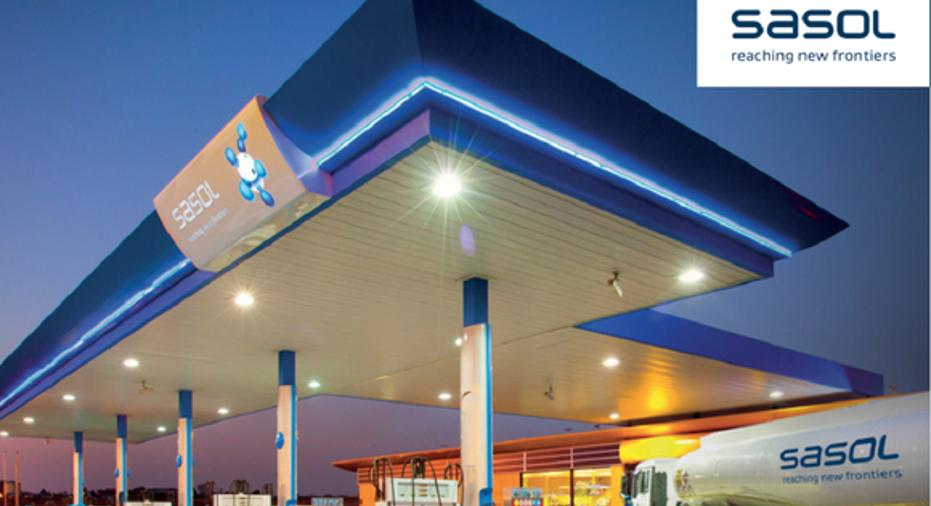Low Oil Prices Keep Sasol on the Defensive

Image source: Sasol.
Energy markets have bounced back somewhat from their lowest levels of 2016, but the rebound hasn't come close to clawing back all of the declines in oil and natural gas prices over the past two years. South African energy company Sasol (NYSE: SSL) has taken dramatic steps to curtail production in certain areas as a result of the economic disruption in the energy markets, and coming into the release of its annual production and sales numbers for the 2016 fiscal year, Sasol shares had lost ground from their best levels of the spring as investors lost hope for a sharp bounce-back in pricing. Sasol's numbers confirmed how the company intends to move forward, even though shareholders aren't sure whether that will lead to higher profits in the near future. Let's take a closer look at what Sasol said and what it means for the future.
Sasol picks its battles
Sasol releases its sales and production information before it gives full financials to investors, but you can draw some valuable conclusions from the reading of the energy company's latest activity. Sasol's different divisions had quite disparate results, reflecting the different behavior of various commodity markets and their impact on the company's supply decisions.
Perhaps the most obvious sign of weakness in the energy market came from Sasol's exploration and production unit. The company reported overall sales of natural gas of 20.7 billion cubic feet, down 5% from fiscal 2015's final figures. Sales of condensates fell even more sharply, dropping by more than a quarter to 143.7 million barrels. Sasol pointed to weak prices for natural gas in the North American market as motivating the decisions to curtail production, noting that it has cut appraisal, development, and drilling activities in Canada until a sustainable recovery comes about for the local natural gas market.
Yet even in that division, activity levels in Africa were more encouraging. Sasol's share of production in Mozambique stayed relatively steady, with natural gas production rising 5% to offset a 2% drop in condensate output. Crude oil production in Gabon jumped 15% to 1.55 million barrels.
The rest of Sasol's energy and mining business saw narrowly mixed performance. Coal production rose by more than a million tons to 40.3 million tons, and refined synfuel production was up about 1% to 33.2 million barrels. Sales of liquid fuels were nearly unchanged, while slight gains in methane-rich gas sales offset declines in traditional natural gas. Production levels at the company's Natref facility rose slightly, offsetting a decline at its Oryx gas-to-liquids plant, which stemmed from reductions in utilization rates that were tied to required shutdowns during the fiscal third quarter.
How Sasol's chemicals business did
Sasol also saw mixed performance in its major chemicals business. Base chemical sales fell by nearly 8%, with steep declines in fertilizer and polymer sales outweighing slight gains in sales volumes from solvents. Pricing was especially weak, falling more than 20% to $763 per ton and continuing a precipitous downward trend that has slashed average pricing by nearly a third over the past two years.
However, Sasol's performance chemicals unit did better. Overall revenue climbed 3.5% to 71.3 billion South African rand, and sales of organics saw a nearly 4% jump in volume. Sasol explained that weaker exchange rates helped benefit its export business, and strength in demand for alcohol and resilient surfactant volume offset weaker ethylene pricing in North America. Nevertheless, production challenges hurt sales volume for wax and other performance chemical products, sending overall volume figures down 1% and pointing to the importance of stronger pricing in maintaining revenue.
For the most part, Sasol has managed to handle operational challenges fairly well. The company pointed to higher demand in its retail convenience sales locations for driving higher liquid fuels sales, but drought conditions in southern Africa hurt fertilizer-related demand. Meanwhile, a weak mining market worldwide caused Sasol to temper its mining production, and planned shutdowns of several plants across the globe held back some of the company's potential growth.
Since the report, Sasol has seen its shares climb, partly in response to higher energy prices and partly because of investors' belief that the stock is undervalued compared to its long-term potential growth. Once the company releases its full financial report, Sasol investors should have a better idea of what direction the energy company intends to go in the future and whether that can produce more encouraging results in the long run.
A secret billion-dollar stock opportunity The world's biggest tech company forgot to show you something, but a few Wall Street analysts and the Fool didn't miss a beat: There's a small company that's powering their brand-new gadgets and the coming revolution in technology. And we think its stock price has nearly unlimited room to run for early in-the-know investors! To be one of them, just click here.
Dan Caplinger has no position in any stocks mentioned. The Motley Fool recommends Sasol. Try any of our Foolish newsletter services free for 30 days. We Fools may not all hold the same opinions, but we all believe that considering a diverse range of insights makes us better investors. The Motley Fool has a disclosure policy.